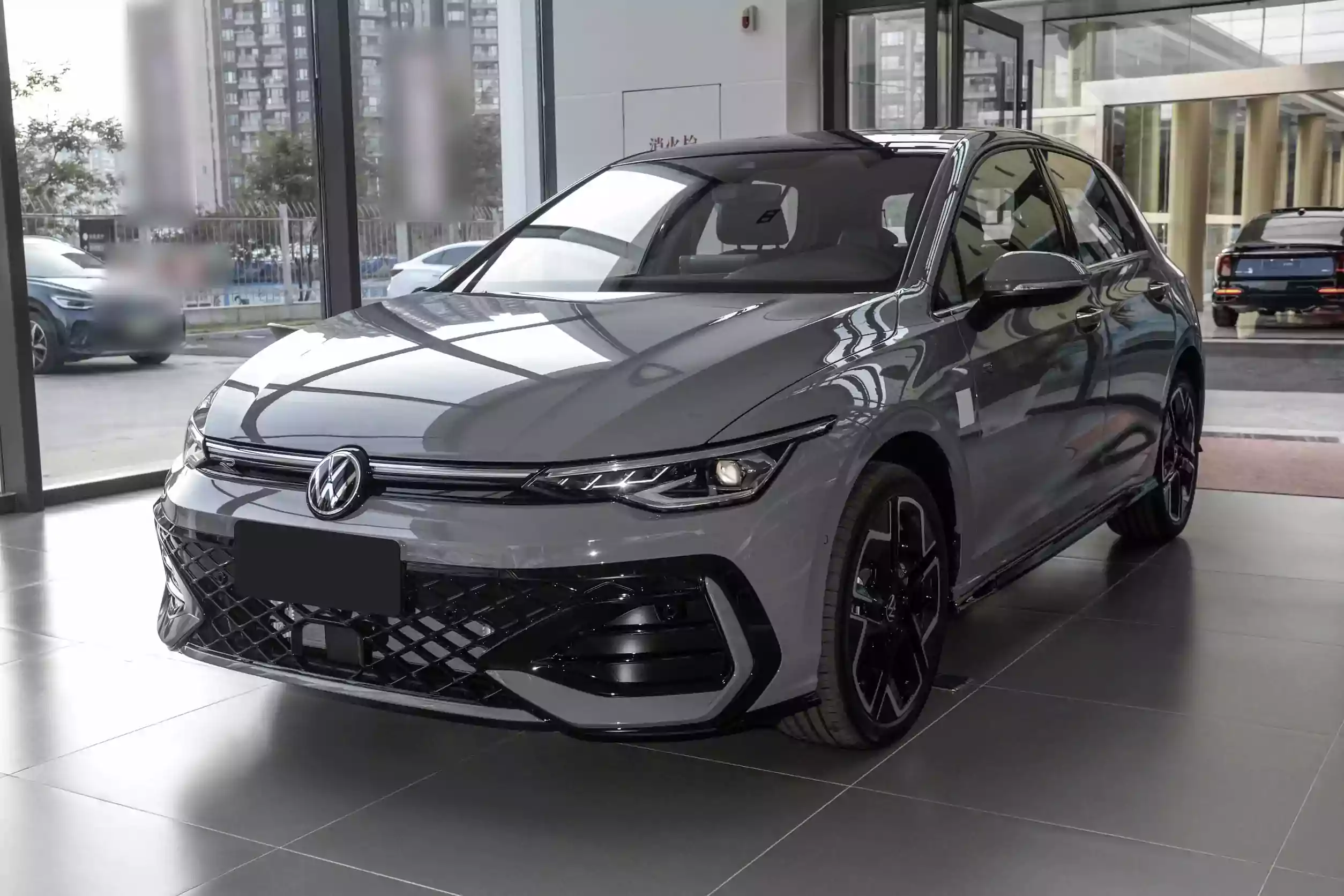The best small family cars are those that skillfully combine a range of practical attributes—whether it’s the ability to haul luggage, maintain impressive fuel or electric efficiency, or deliver an unexpectedly enjoyable drive on twisty roads.
When it comes to choosing the perfect car for a small family, you need a balance of practicality, comfort, and affordability. The ideal vehicle should be spacious enough for your daily needs but still compact enough to maneuver easily around city streets and tight parking spaces.
Whether you’re commuting to work, running errands, or taking a weekend trip, the right car should offer versatility, good fuel efficiency, and some fun behind the wheel. In this article, we’ve rounded up the top cars that tick all the boxes for small families, ensuring a smooth, enjoyable, and practical ride for everyone.
1. Peugeot 2008
Among the top contenders in this category is the Peugeot 2008, which earns an 8/10 rating. Essentially a larger and even more boldly styled version of the 208 hatchback, the 2008 carries its dramatic aesthetic into a well-made and attractive interior.
It’s fun to drive and economical to run, though it does have drawbacks, including limited rear-seat and boot space. The electric variant, the e-2008, offers a smooth and efficient driving experience but is restricted by an official range of just 214 miles.
Standout features include the stylish exterior, enjoyable handling, and a futuristic 3D dashboard display. However, adult passengers may feel cramped in the back, the automatic gearbox can be sluggish, and the infotainment system is not the easiest to navigate.
Pricing for a new Peugeot 2008 starts at £22,100 (or around £266 per month), with used models available from £8,895.
Fortune favours the brave, and there’s nothing wrong with setting ambitious goals — after all, imagine if NASA had deemed reaching the Moon to be too lofty an ambition.
This kind of mindset is exactly what we admire about the Peugeot 2008, which sets its sights high. For years, Peugeot has been competing with mainstream brands, and continues to do so.
However, with the top-spec engine and trim options, the 2008’s price point ventures into territory traditionally occupied by more premium models like the Audi Q2 and Lexus LBX. The question is, does the Peugeot 2008 truly deserve to be compared to such rivals?
The Peugeot 2008 impresses with its sophisticated interior and a selection of lively, fuel-efficient petrol engines. For those looking for the best balance of value and standard features, the PureTech 130 engine in Allure trim is a solid choice.
However, when it comes to overall performance, the Ford Puma and Skoda Kamiq edge out the 2008, and if you’re after a premium badge, the Audi Q2 is still the top choice.
The 2008’s interior is elegant, and it offers a smooth ride, particularly on longer journeys. Its petrol engines are both punchy and economical, making it a strong contender in its class.
On the downside, it comes with a higher price tag compared to mainstream competitors, and it also suffers from more significant depreciation. Additionally, the driving position may not be ideal for everyone.
The performance of the Peugeot 2008 is strong, with its punchy petrol engines, comfortable high-speed cruising, and a relatively quiet cabin. However, it falls short in a few areas — the handling isn’t as sharp as some rivals, and the ride comfort could be better, especially around town.

The automatic gearbox, available with the PureTech 130 engine, can also feel hesitant at times. The engine lineup starts with the 99bhp 1.2-litre turbo petrol, known as the PureTech 100.
Although we haven’t tested it in the latest 2008, it’s a top pick in the similar Peugeot 208, so it should perform well here. The 129bhp PureTech 130 is the most popular option and offers flexible performance, with plenty of power at low revs for everyday driving.
Both engines are available with a six-speed manual transmission, but the PureTech 130 can also be equipped with an eight-speed automatic. Our recommendation is to stick with the manual, as the automatic gearbox can be slow to react when pulling away or needing quick acceleration.
When it comes to ride comfort, the Peugeot 2008’s relatively soft suspension does a great job of absorbing bumps on A-roads and motorways. Aside from some bounce over larger undulations, it proves to be a comfortable companion on longer drives. However, at slower speeds, particularly in town, the ride can feel less refined.
The 2008 struggles with larger surface imperfections, and hitting a pothole can cause a noticeable jolt throughout the car. While the ride isn’t uncomfortable, those who spend more time in urban environments than on open roads might find that the Skoda Kamiq or Volkswagen T-Roc offer a more comfortable experience.
Also Read: 10 Vehicles With Best Long-Term Fuel Economy That Save You Money Year After Year
2. Dacia Sandero
The Dacia Sandero, rated 8/10, has come a long way from its ultra-budget roots and now holds its own surprisingly well against more established small cars like the Ford Fiesta and Vauxhall Corsa.
While it may not lead the class in interior materials or features, the Sandero feels solid and much more refined than older versions. Cabin space is generous and practical for a car in this price bracket, making it a genuinely usable option for small families.
On the road, it delivers a driving experience that, while not exciting, is perfectly competent for daily use. The standout strength of the Sandero is its unbeatable value—opting for one could leave you with enough money left over to fund a family holiday.
It scores well for its excellent value, spacious and functional interior, and surprisingly good resale value. However, it’s not without flaws. Its disappointing two-star safety rating is a concern, and the lack of rear USB ports is a miss in today’s tech-reliant age.
Additionally, if you want one in a bright, eye-catching color, you’ll have to pay extra. A new Dacia Sandero starts at just £14,013 (or around £209 per month), and used models can be found from £7,995, reinforcing its position as one of the most budget-friendly family cars on the market.
The Dacia Sandero is produced by a Romanian brand owned by French car maker Renault, and while its name has Greek roots, meaning “warrior,” it certainly lives up to that with its strong value proposition.
No other new small car is priced lower than the Sandero, with even the compact Kia Picanto costing more than the entry-level model. The Sandero 1.0 TCe Bi-Fuel Expression, which is our top pick in the range, also costs thousands less than the most basic Skoda Fabia.
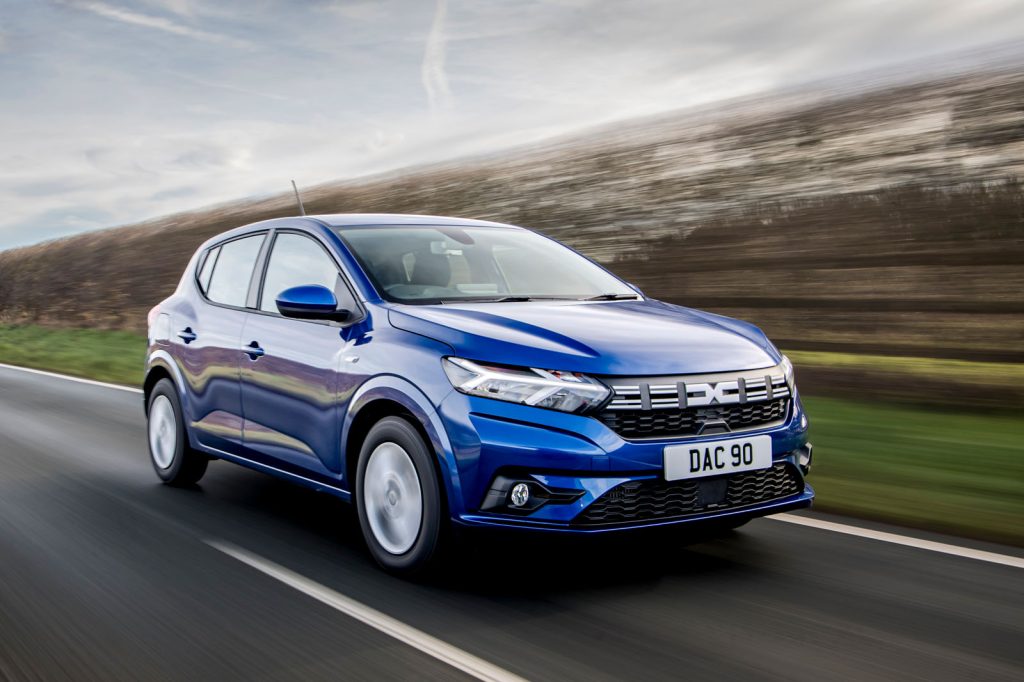
However, just because it’s affordable doesn’t mean it’s simply a basic, no-frills car. In the past, that might have been the case, but now, thanks to being built on the same platform as the latest Renault Clio, the Sandero feels much more modern.
Still, it competes in a class that includes cars like the Honda Jazz and Volkswagen Polo. The question is, can the Dacia Sandero really stand up to these top-tier models on anything other than price? Read on to find out.
For a car priced so low, the typical verdict might be “cheap but not great,” but that’s not the case with the Dacia Sandero. It stands out as one of the best all-rounders in its segment, especially when it comes to practicality.
The TCe 100 Bi-Fuel engine, which is our preferred option, also offers the potential for lower running costs. The only real downside is its disappointing Euro NCAP safety rating, which falls behind some of its rivals.
However, the Sandero offers incredible value, plenty of space for both passengers and luggage, and a comfortable ride, making it a solid choice in its class. On the flip side, its safety rating lags behind some competitors, and while it’s easy to drive, it may not be as engaging or quiet as some of its rivals.
The Dacia Sandero comes with two versions of the turbocharged 1.0-litre TCe engine: the TCe 90 petrol and the TCe 100 Bi-Fuel. The TCe 90 produces a respectable 90bhp and can accelerate from 0-62mph in 12.2 seconds. While this is slower than the Honda Jazz, it is still faster than the VW Polo 1.0 TSI 80.
Despite the slower official time, it feels far from sluggish, offering plenty of low- and mid-range power to keep pace with traffic. The TCe 100 Bi-Fuel engine, our preferred choice, produces 99bhp and can run on both LPG and petrol.
The official 0-62mph time is the same for both engines, but the TCe 100 Bi-Fuel feels more powerful at lower speeds when running on LPG, delivering a smoother and quieter ride. For those looking for an automatic gearbox, the TCe 90 engine is available with an automatic, but we’d recommend avoiding it, as it dulls the car’s performance.
The Sandero’s suspension is relatively soft, smoothing out road imperfections without making the ride feel too bouncy, unlike the Citroën C3 Origin, which can be jarring.
If you’re looking for a small car with noticeably better ride comfort, you’d need to spend more money on models like the Peugeot 208 or Volkswagen Polo, both of which feel more polished on rougher roads.
3. Volkswagen Golf
The Volkswagen Golf, rated 8/10, has long been a staple in the family hatchback category, with over 40 million units sold since its debut in 1974. Its popularity is no surprise, as it combines a strong reputation for being well-built, comfortable, and enjoyable to drive.
The eighth generation of the Golf continues this tradition, though it’s held back slightly by a touch-sensitive touchscreen interface that can be tricky to use and a boot that’s a bit on the smaller side. However, for those who need more space, the spacious estate version is a great alternative.
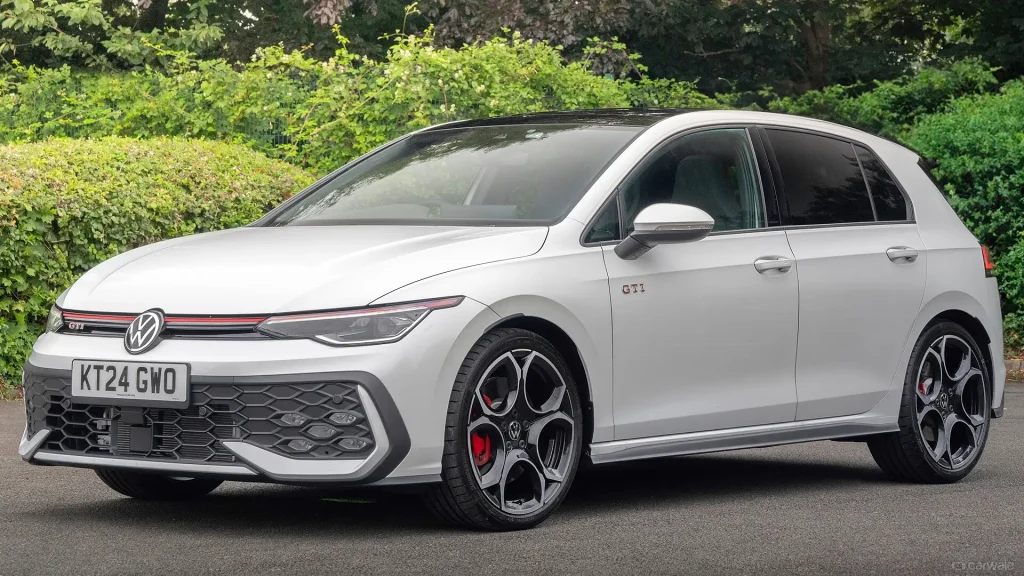
The Golf stands out for its impressive choice of efficient engines, a comfortable ride that handles bumps well, and the latest in technology.
However, its styling might not stand out, and the optional extras can quickly drive up the price. Additionally, while it’s reasonably roomy, it doesn’t offer the class-leading space some competitors do. A new Volkswagen Golf starts at £26,011 (or £272 per month), while used models are available from £13,300.
4. Volkswagen ID.3
The Volkswagen ID.3, also rated 8/10, marks VW’s first fully electric car designed from the ground up. While it has its drawbacks, such as a frustrating infotainment system and a cabin that feels too basic, the ID.3 impresses with a range of over 250 miles and plenty of interior space.
It also delivers a smooth, comfortable ride, making it a solid option for long-distance travel. The ID.3’s strengths include excellent range and fast charging capabilities, a comfortable driving experience, and the added convenience of a third ISOFIX point on the front passenger seat.
On the downside, the infotainment system is annoying to use, and the large alloy wheels can compromise comfort when driving in the city. Furthermore, some competing models come in at a lower price. A new Volkswagen ID.3 starts at £29,663 (or £246 per month), with used models available from £10,495.
The Volkswagen ID 3 may sound like a name from Star Wars with echoes of R2D2 and C3PO, but it is, in fact, an important car for Volkswagen as their first model specifically designed to be fully electric from the start.
Volkswagen refers to it as the third major launch in its history, following the iconic original Beetle and the popular VW Golf, hence the name “ID 3.” Given the significance of the Beetle and Golf, Volkswagen clearly had high expectations for the ID 3 to make a similar impact in the electric car market.
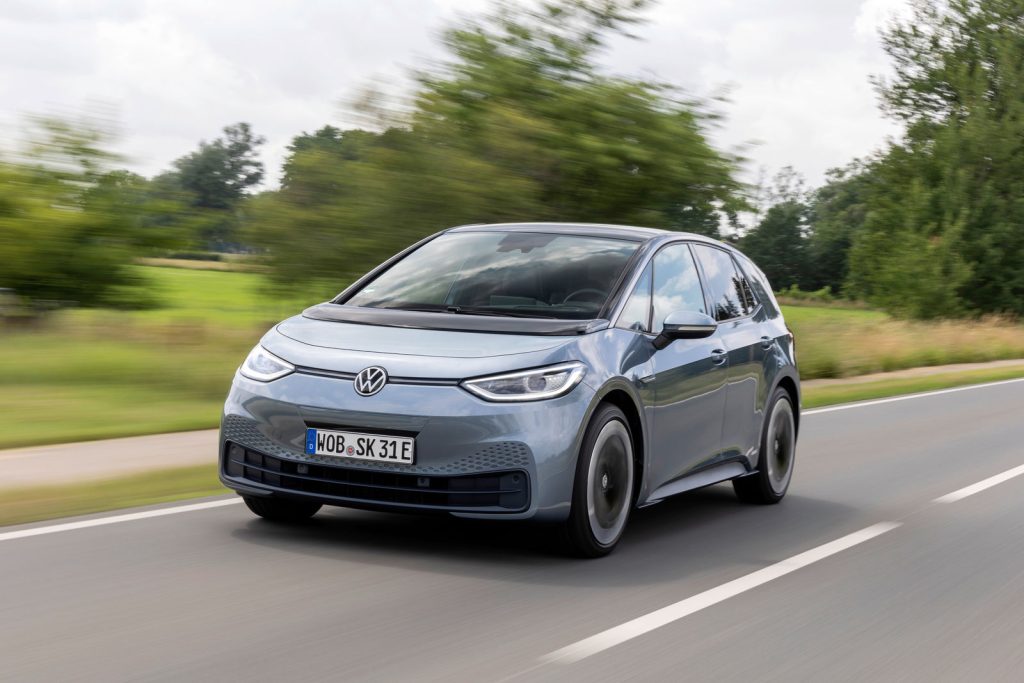
However, it faces fierce competition from a number of capable rivals, including the closely related Cupra Born, the more affordable MG4, the long-established Nissan Leaf, and even the Tesla Model 3, which, although a bit more expensive, remains a strong contender.
In an attempt to stay competitive, Volkswagen has already refreshed the ID 3, offering updated styling and addressing some weaknesses from earlier models. So, does the ID 3 deserve a spot on your driveway? Read on to see how it compares with the best electric vehicles on the market.
The ID 3 delivers decent driving dynamics, comfort, and is quite lively in its Pro S version. However, it comes at a higher price point, so it’s worth considering other options like the MG4 EV or the Tesla Model 3. If you do choose the ID 3, we recommend opting for the Pro Match model.
However, it’s best to avoid the high-performance GTX variant, as it has a very firm ride that doesn’t make it much fun to drive. The ID 3 comes loaded with standard luxury and safety features, offering sprightly performance and an enjoyable driving experience.
That said, the interior quality can be inconsistent, and the controls can be cumbersome to use. Additionally, the Tesla Model 3, though more expensive, benefits from a superior charging network, making it a more practical choice for some buyers.
Most versions of the Volkswagen ID 3 come with a 201bhp electric motor powering the rear wheels, paired with either a 58kWh battery (Pro model) or a 77kWh battery (Pro S model).
The Pro version is the lighter option and feels quicker in urban settings, capable of accelerating from 0-62mph in 7.4 seconds, which is faster than the MG4 SE. In contrast, the Pro S takes 8.2 seconds to reach the same speed, but both versions feel sufficiently lively off the line and can easily reach motorway speeds.
If speed is a priority, the GTX variant is available, which has a 322bhp motor and can accelerate to 62mph in just 5.7 seconds. The GTX also comes with the largest battery, a 79kWh unit, providing the longest official range of any ID 3, at 369 miles.
The Pro S offers a solid 344 miles, which is more than any Kia Niro EV or the entry-level Tesla Model 3, though it doesn’t quite match the MG4 Extended Range. Meanwhile, the Pro model offers a more modest range of up to 269 miles.
5. Skoda Octavia
The Skoda Octavia, rated 8/10, can be considered a more refined version of the Volkswagen Golf. With a more striking exterior design compared to the Golf’s somewhat uninspiring front end, the Octavia also features a superior cabin that feels more premium.
Inside, it offers ample space, with generous rear-seat room and a substantial 590-litre boot, making it a great option for families. For those looking for something sportier, the vRS model provides an exciting driving experience, while the stylish estate version is possibly one of the best family cars available.

The Octavia shines with its exceptional interior space, a cabin that feels well put together, and a selection of efficient engines available at competitive prices. However, the interior design is a bit dull, and while the Octavia offers great practicality, alternatives may be more engaging to drive.
Additionally, the VW Golf remains a more comfortable and quieter choice for those seeking a smoother ride. A new Skoda Octavia starts at £25,755 (or £226 per month), with used models available from £12,748.
Small Cars That Aren’t Reliable
Many of the most popular small cars are available second-hand at affordable prices, offering a great balance of fun handling, comfortable interiors, and ample boot space for family needs. However, some models come with a reputation for unreliability, leading to frequent trips to the mechanic and higher repair costs.
We surveyed car owners to gather insights on the reliability of their vehicles over the past 24 months, identifying which models were prone to breakdowns, how long they spent in the shop, and the repair costs involved. In this article, we uncover the 5 most unreliable used small cars, aged between six and 20 years, that you may want to avoid.
Also Read: 10 Cars Best Suited for Mountain Driving in the Rockies
1. Citroën C3 (2010-2016)
The second-generation Citroën C3 holds the title of the most unreliable used small car you can purchase. While only 26% of owners reported issues with their cars, a significant portion of these vehicles—around a quarter—spent over a week in the shop. Nearly half (48%) of the reported faults had repair costs ranging between £201 and £750.
Common problems identified by owners included issues with the air conditioning and brakes. Despite these troubles, Citroën’s overall performance in this year’s used car reliability survey was poor, with the brand finishing last.
However, the brand’s newer models performed notably better; for cars up to five years old, Citroën ranked 11th out of 32 brands, just ahead of Honda and Skoda.
The Citroen C3 is the French manufacturer’s answer to popular small cars like the Ford Fiesta and Vauxhall Corsa. The first generation of the C3 was launched in 2002, but this review focuses on the model sold between 2009 and 2016.
Sold exclusively as a five-door, the C3 featured a unique ‘Zenith’ extended windscreen on higher trim levels, which stretched above the driver’s head to create a light and airy cabin. In practice, however, drivers often need to pull the adjustable roof lining forward to avoid glare.
As Citroen’s best-selling car, the C3 offers good value for money. It’s affordable to buy, economical with its engines, and stands out with its quirky extended windscreen.
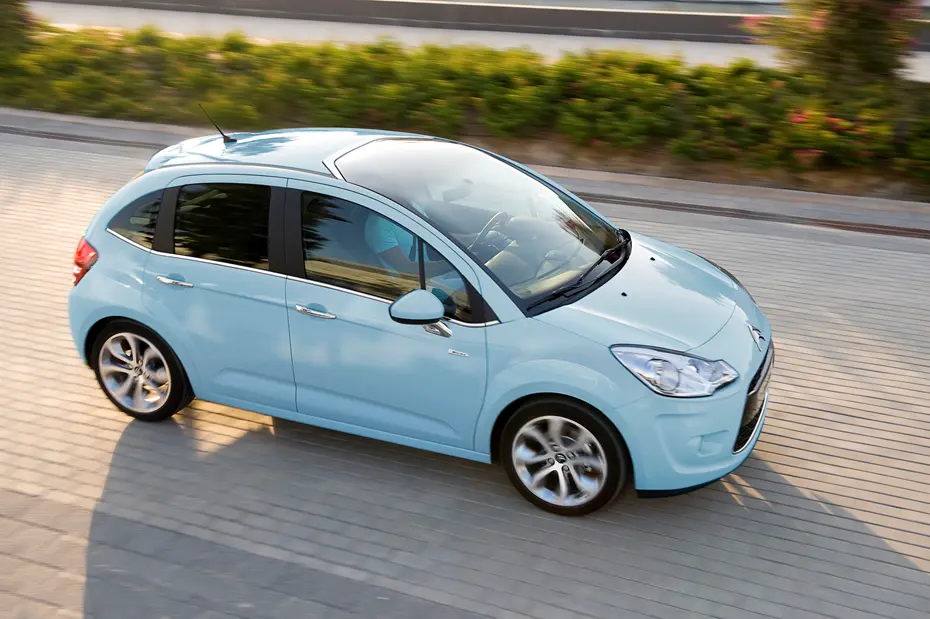
However, it does face challenges from rivals when it comes to driving dynamics, with competitors being more engaging on the road. Additionally, the C3 has small rear seats and can be quite noisy at high speeds.
The C3 was available with both petrol and diesel engines, some of which were shared with the more expensive Mini. However, unlike the Mini, the C3 prioritizes ride comfort over sporty handling, making it more suited to urban driving. It absorbs bumps and potholes well, ensuring a smooth ride.
The downside of this soft suspension is that the C3 lacks the precision and agility of rivals like the Ford Fiesta, and it also struggles on long journeys compared to the Volkswagen Polo.
The C3 experiences significant wind and tire noise, and its seats, while seemingly supportive, are not the most comfortable on extended trips. The manual gearbox also feels somewhat notchy, and if you opt for an automatic, you’ll have to choose between a sluggish four-speed in the petrol variants or a jerky robotized manual in the later diesel models.
In terms of interior space, the rear legroom is tighter than what you’d find in a Polo, mainly because Citroen sacrificed some space for a larger boot. However, front storage is less impressive, with the fuse box taking up half of the glovebox.
When it comes to ownership costs, a budget of £2,500 will allow you to choose from a low-mileage first-generation Citroen C3 or one of the cheaper second-generation models.
Cars with higher mileages are typically diesel, while opting for a basic 1.1-litre petrol engine will get you a fresher, albeit slower, C3. A budget closer to £4,000 provides more options in terms of engines, with many low-mileage cars available. P
ost-2013 facelift models, identifiable by chrome bars across the grille, start at around £5,000. At the upper end of the scale, around £7,000 will allow you to purchase a nearly new second-generation C3, less than a year old, with only a few hundred miles on the clock.
2. Ford Fiesta (2002-2008)
The fifth-generation Ford Fiesta comes in at number two on the list of unreliable used small cars. According to our survey, 46% of Fiesta owners experienced issues with their cars at some point, with common problems typically related to the bodywork, exhaust, or suspension.
Less than half of the reported faults were resolved within a day, while 11% took more than a week to repair. Most repairs cost owners between £51 and £200, although some repairs reached up to £750. The Fiesta has a reliability rating of 65.5%, making it a car you might want to approach with caution when buying second-hand.

3. Nissan Micra (2010-2016)
The Nissan Micra (2010-2016) ranks third on the list of unreliable used small cars, highlighting a significant issue with Nissan’s track record for used vehicle reliability.
A total of 47% of Micra owners reported experiencing problems with their cars over the past 24 months. The most common issues were related to suspension, although engine electrical faults were also frequent.
Half of the reported faults left the cars undriveable, with most repairs taking anywhere from one day to a week to complete. While most repairs cost less than £300, 8% of owners faced bills ranging from £751 to £1,000. The Micra holds a reliability rating of 66.4%, making it one to approach carefully when looking for a second-hand vehicle.
The Nissan Micra has had its share of bad luck over the years, with one of its most notable moments being Richard Hammond famously driving a pink convertible version while wearing a bag over his head – an image that certainly didn’t do the model any favors.
Thankfully, the car being discussed here isn’t the same one. This is the 2017-2022 generation of the Micra, which presents itself as a more stylish option. Whether it can be considered a truly attractive small car is subjective, but it certainly looks sharp.
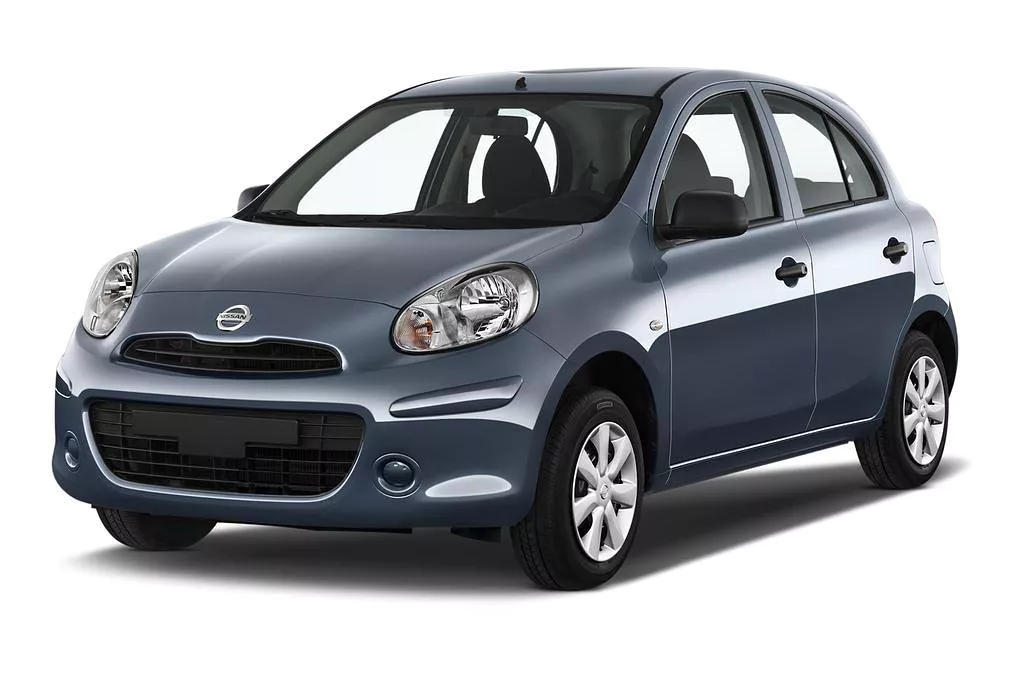
The Micra offers affordability, decent equipment, and comfort, though it doesn’t quite stand out as a class leader. It features a smart interior, a good range of safety features, and comfortable front seats. However, it’s not the most engaging car to drive, lacks Android Auto, and suffers from poor rear headroom.
In terms of engines and performance, the Micra offers two petrol options and one diesel engine. The entry-level model comes with a 71bhp 1.0-litre petrol engine, while a more powerful 89bhp 0.9-litre turbocharged petrol engine is available for those who need better performance on faster roads.
There is also a turbocharged 1.0-litre engine available in 92bhp, 99bhp, and 115bhp variants for those seeking more power.
If fuel economy is your priority, there’s a 1.5-litre diesel engine, which is impressively refined for a small car. However, the diesel engine was discontinued in 2020, and the 71bhp 1.0-litre petrol was also removed from the lineup the previous year.
When it comes to ride and handling, the Micra is a straightforward car to drive, with light steering, a smooth clutch, and a brake pedal that offers good progression. The suspension, however, doesn’t handle sharp, sudden bumps, such as potholes, particularly well when driving around town.
This results in the transmission of low-frequency vibrations caused by rough road surfaces into the cabin. On the motorway, though, the ride becomes smoother, and the car feels stable and secure. While road noise is generally well-controlled, you might notice some wind noise from the large door mirrors.
4. Ford Fiesta Diesel (2008-2017)
Diesel-powered versions of the sixth-generation Ford Fiesta have shown a marked decline in reliability compared to their petrol counterparts, with a third of owners reporting issues over the past two years. Interestingly, the engine itself was not usually the source of the problems.
Instead, the most common complaints involved the air-conditioning system and suspension, with additional issues affecting the battery, brakes, engine, engine electrics, fuel system, interior trim/seats, and steering.
Almost half of these problems were resolved within a day, and 15% of cars had their issues fixed for free. However, some owners found themselves facing repair bills ranging from £751 to £1,000. Despite these challenges, the diesel-powered Fiesta holds a reliability rating of 70.3%.
When inspecting a used Fiesta, it’s crucial to carefully check for any clutch issues. Problems such as a smelly, slipping, or otherwise faulty clutch are common, so ensure the clutch engages smoothly and that you can change gears without any difficulty.
For cars equipped with a turbo, verify that the turbo is functioning correctly; you should feel a noticeable surge of power when it kicks in during acceleration.
Fiestas are frequently used in town, so it’s important to check for scuffs, scrapes, and parking dings. Pay close attention to the condition of the alloy wheels, looking for any signs of kerbing or scuff marks.
Some early models’ alloy wheels have been known to buckle easily, so inspect them thoroughly. If you notice any juddering in the steering, repetitive noises from the wheel area, or other unusual symptoms, it’s best to walk away from the vehicle.
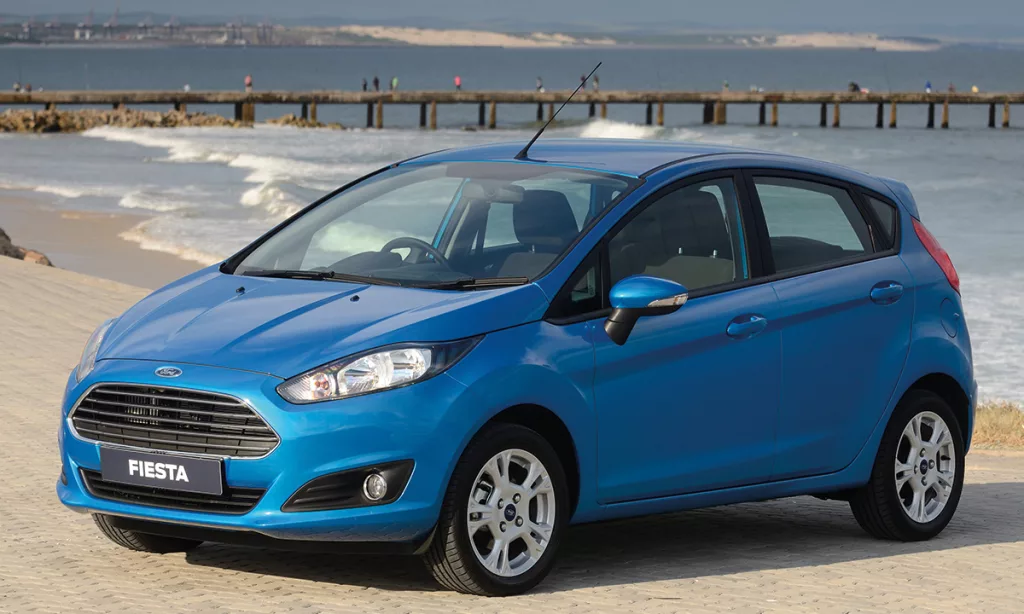
Additionally, make sure the service history is complete, as some ex-fleet and lease vehicles may have missed necessary maintenance.
Diesel variants of the Fiesta have experienced issues with fuel injectors, which can be expensive to repair, so keep this in mind if you’re considering one of these models.
The interior can also present problems. The plastics used on the dashboard and door cards are prone to marking, particularly if children are frequent passengers.
Some owners have reported dissatisfaction with the quality of the materials. There are also known issues with the stereo system, which may develop faults, and the heating and ventilation system can malfunction.
Another potential issue to check for is water leaks, which can lead to dampness in the front footwells. This could result in mould in cars that have been left unused for extended periods. When inspecting a car, lift the mats and inspect carefully to avoid overlooking this problem.
5. Mini Hatchback Petrol (2007–2014)
If you’re considering the older generation Mini to avoid high repair costs, think again. Petrol models from the 2007–2014 range have actually proven to be less reliable than the newer version. A significant 48% of these vehicles developed faults — with engine issues being the most frequent.
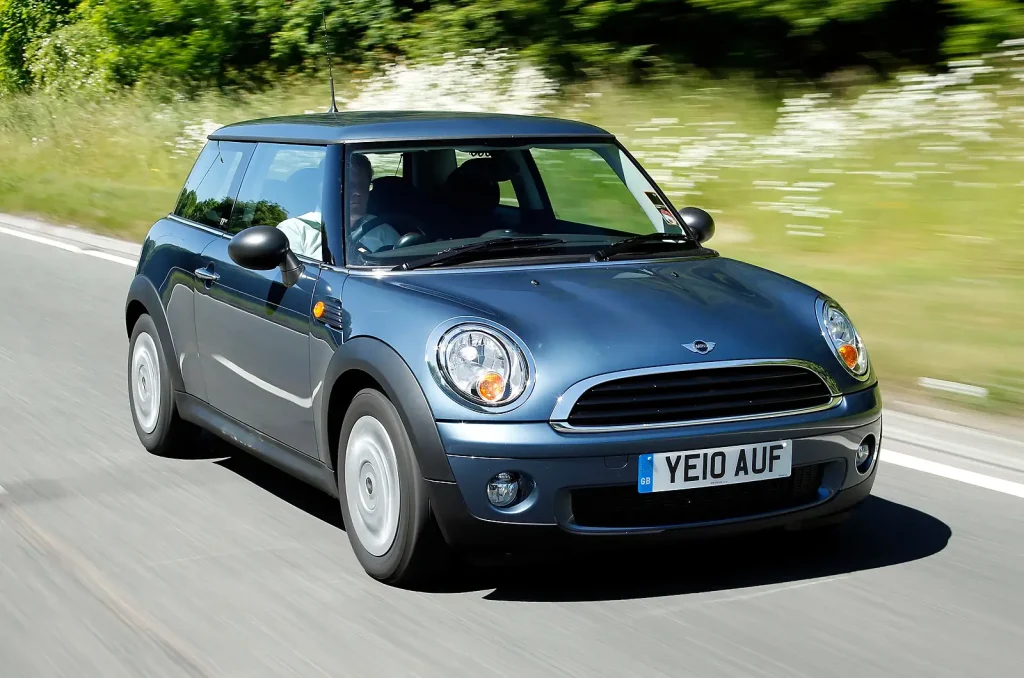
Additionally, owners reported problems across multiple systems including the air conditioning, battery, bodywork, brakes, electrical components, exhaust, fuel system, gearbox or clutch, interior trim or seats, and steering.
On the positive side, more than one-third of the reported faults didn’t render the vehicle unusable and were resolved within a day. That said, 28% of the cases left the car undriveable and required over a week to repair.

